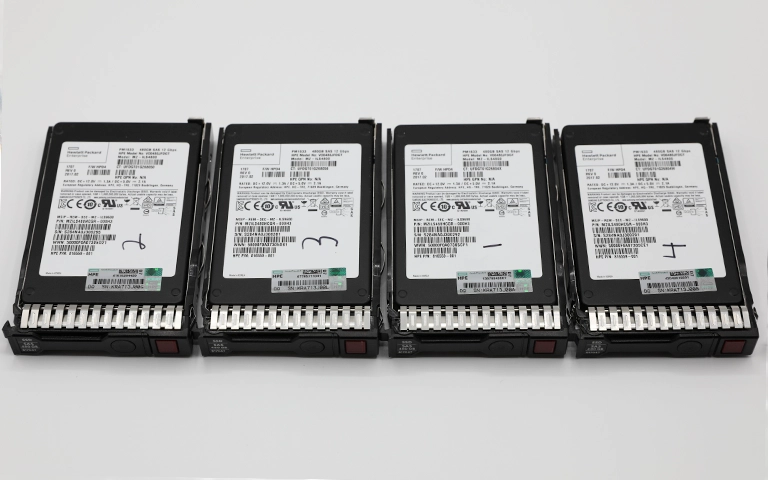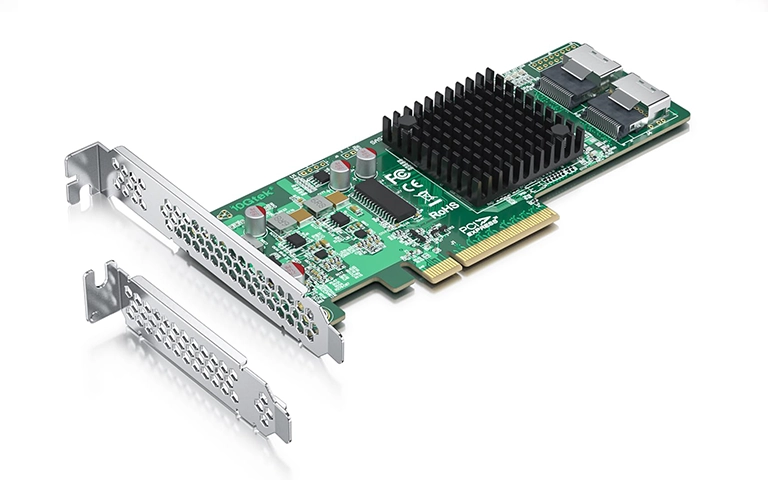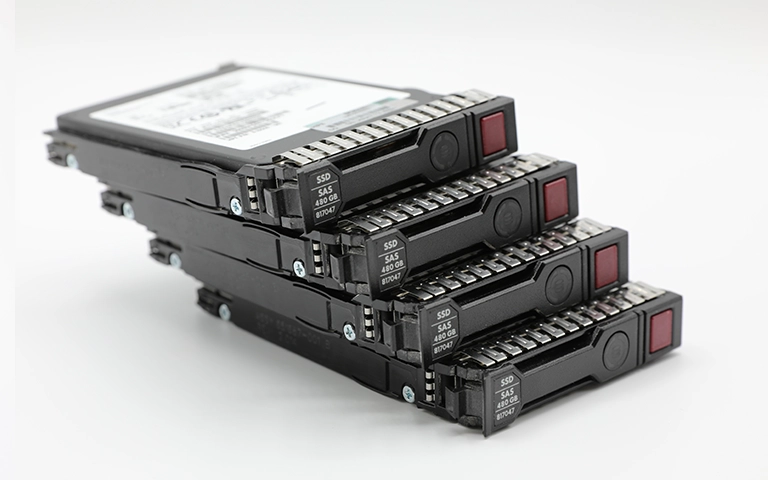RAID systems are valued for their performance, redundancy, and reliability, which is why they are widely used by businesses and IT teams that rely on constant access to data.
However, even with a robust design, RAID arrays are not immune to RAID data loss. A single malfunction in one or more drives, a power disruption, or a simple user error can quickly compromise an otherwise secure configuration.
When RAID data loss occurs, it can halt operations, corrupt critical databases, or render large volumes of files inaccessible. Understanding why these failures happen is the first step towards preventing them.
If your RAID system has already failed or your data can no longer be accessed, contact RAID Recovery Services for expert assessment and secure RAID data loss recovery support.

What RAID Is And Why Data Loss Still Happens
RAID, or Redundant Array of Independent Disks, combines multiple hard drives into a single storage pool to improve performance, capacity, or fault tolerance.
Depending on the RAID level, data may be mirrored, striped, or stored with parity to protect against individual drive failures. These configurations help reduce downtime and provide faster access to business critical information.
However, RAID is often mistaken for a complete safeguard against RAID data loss. While redundancy can protect against some drive failures, it does not cover every risk.
A sudden power surge, multiple drives failing at the same time, or a corrupted RAID controller can still result in total data loss.
On top of this, human errors such as incorrect rebuilds, replacing the wrong drive, or formatting the wrong volume frequently lead to permanent data loss.
Even though RAID offers strong performance and resilience, it should never be treated as a replacement for a dedicated backup strategy. For more detail, explore our post on why RAID is not backup.
Common Causes of RAID Data Loss
RAID arrays can fail for a wide range of reasons, from hardware faults to accidental human actions. Understanding these risks helps you take preventative measures and respond effectively when something goes wrong. Below are some of the most frequent causes of RAID data loss:
Multiple drive failures: RAID levels such as RAID 0 and RAID 5 become highly vulnerable if more than one disk fails. Once redundancy is lost, the stored data can no longer be rebuilt reliably.
Power surge or outage: A sudden loss of power or sharp voltage spike can interrupt write operations, leading to file system corruption and damaged parity information.
RAID controller malfunction: A failed, unstable, or outdated controller can disrupt how data is mapped across the drives, leaving the array unreadable.
Firmware corruption: Corrupted firmware on one or more disks can stop them initialising correctly, which often results in partial or complete RAID data loss.
Accidental rebuilds or formatting: Human error, such as choosing the wrong drive during setup, running an incorrect rebuild, or reinitialising the array, frequently destroys original data structures.
Overheating or physical damage: Poor ventilation, excessive vibration, or physical impact can cause progressive drive degradation and eventual failure.
When any of these problems occur, avoid rebuilding or reconfiguring the array yourself. Instead, contact a professional recovery specialist. Learn more about identifying and troubleshooting RAID failures.

Hardware-Related RAID Failures
Hardware issues are among the most common causes of RAID data loss. Even though RAID arrays are designed for resilience, the physical components inside each drive can still wear out or malfunction over time.
Every hard drive has a finite service life. Mechanical parts such as read and write heads or spindle motors can fail after years of operation, leading to unreadable sectors or complete drive failure.
Excessive heat degrades electronic components and shortens the lifespan of RAID disks. Systems that run continuously without adequate cooling are particularly vulnerable.
Unstable or insufficient power can damage several drives at once. Using a reliable power source or UPS helps minimise the risk of corruption during power cuts or voltage spikes.
Vibration, impact, or poor handling during installation or maintenance can cause irreversible damage to the platters and other sensitive components.
Once any of these problems appear, continuing to use the array can make the situation worse. Power the system down and contact a professional recovery team who can diagnose and recover the data safely.
To learn more, visit our post about RAID hard drive failure.
Software and Configuration Problems
RAID data loss is not always the result of physical damage. Software issues and incorrect configurations can also lead to corruption or complete loss of access to stored data.
Attempting to rebuild an array without a clear understanding of its configuration can cause existing data to be overwritten. Many users unintentionally destroy original parity information during this process, turning a recoverable incident into serious RAID data loss.
Faulty firmware updates or system software errors can stop drives from synchronising correctly. Inconsistent metadata between disks often leaves the entire RAID volume unreadable.
If the operating system or file system becomes damaged, even a healthy RAID setup may fail to mount or display data correctly, giving the impression that all files have disappeared.
Changes to RAID settings, incorrect drive order, or mismatched parameters after a disk replacement can all create logical inconsistencies that prevent normal access to data.
Outdated, unstable, or failed RAID controller drivers can interfere with communication between the drives, disrupting data flow across the array and causing RAID data loss.
These failures require specialist tools and technical expertise to recover data safely. Learn more about avoiding mistakes during array restoration in our post on RAID rebuild data loss risks.

Preventing RAID Data Loss
Although RAID systems are designed with redundancy in mind, proactive measures are essential to protect your data from unexpected failures. Regular monitoring, disciplined maintenance, and reliable backups can significantly reduce the risk of RAID data loss.
Maintain regular backups: Even with redundancy, RAID is not a backup solution. Keep copies of critical data on separate storage devices or in secure cloud platforms so information remains accessible if the array fails.
Monitor drive health: Use monitoring tools to track temperature, error rates, and overall disk performance. Replacing a drive before it fails helps maintain array stability and reduces the chance of unplanned downtime.
Use an uninterruptible power supply (UPS): A UPS helps protect against power surges and sudden outages that can interrupt write operations and compromise data integrity.
Avoid DIY rebuilds: When a RAID becomes degraded or fails, do not attempt a rebuild without a full understanding of the configuration. Incorrect rebuilds can overwrite original data and cause permanent loss.
Update firmware and controllers carefully: Always verify firmware updates before installing them. Back up data in advance and avoid making several system changes at the same time.
For more detailed guidance, explore our post on data loss prevention.
Fast turnaround times for business-critical data
Professional RAID Recovery Solutions
When a RAID system fails, professional recovery is usually the safest and most effective option. Specialists have the tools and expertise to diagnose the issue, rebuild the array, and restore data without causing further RAID data loss.
At RAID Recovery Services, our engineers start with a detailed assessment to identify the type and extent of the failure. Each drive is carefully imaged to preserve its original state before any recovery work begins. Once the images are secured, the array is reconstructed in a controlled environment so data can be extracted safely.
Our team is equipped to manage a wide range of RAID failures, including drive faults, controller corruption, and complex logical errors. We work with arrays configured in RAID 0, 1, 5, 6, 10, 50, and other enterprise layouts.
Attempting a rebuild or recovery with general software tools can permanently overwrite valuable information. It is far safer to let experienced professionals control the process.
If your array has stopped working or your files are no longer accessible, contact RAID Recovery Services today to arrange a secure evaluation and recover your data efficiently.

Conclusion
RAID systems provide a strong balance of speed, capacity, and reliability, but they are not completely protected from RAID data loss.
Hardware faults, software corruption, and incorrect rebuild attempts can all result in serious loss of access to critical information. By understanding the main causes and following sensible preventative measures, you can reduce the risk and keep your data better protected.
If your RAID array has failed or you suspect corruption, avoid trying to repair it yourself. Contact RAID Recovery Services to speak with experienced engineers who can assess your system and restore your data with accuracy and care.
Trust the experts with proven results
Frequently Asked Questions
What are the most common causes of RAID data loss?
RAID data loss often occurs due to multiple drive failures, power surges, controller faults, or incorrect rebuild attempts. Software corruption, damaged firmware, and human error during maintenance can also trigger serious loss of data.
Can RAID prevent all types of data loss?
No. RAID provides redundancy but not complete protection. It can help in some drive failure scenarios, but it cannot prevent RAID data loss caused by user mistakes, file corruption, malware, or natural disasters. Regular, verified backups are essential for full data protection.
What should I do if my RAID system fails?
Stop using the array immediately to avoid further damage. Do not rebuild, reinitialise, or format the RAID. Instead, contact a professional RAID data loss specialist who can diagnose the fault and carry out recovery in a controlled lab environment.
Can I recover lost RAID data using software?
DIY software tools can easily make the situation worse by overwriting sectors or damaging array structures. Professional recovery services use specialist hardware imagers and controlled workflows to extract data safely and reduce the risk of permanent loss.
How does RAID Recovery Services handle RAID data loss cases?
Our engineers begin with a full diagnostic assessment to identify the cause and scope of the failure. Each drive is imaged individually before the RAID is rebuilt virtually in the lab. This approach maximises recovery success while keeping risk to a minimum.